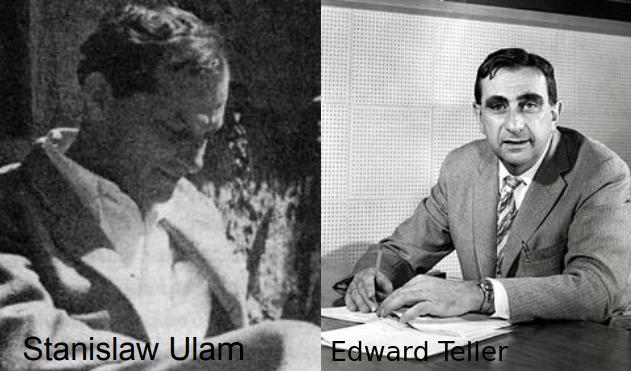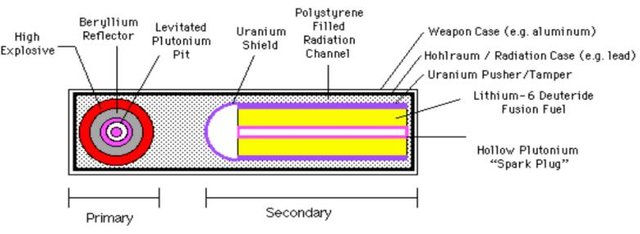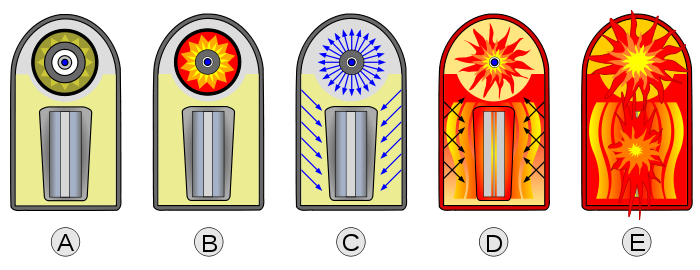The Teller-Ulam design of a Hydrogen bomb
Modern Hydrogen bombs, also known as thermonuclear or fusion bombs, are mostly based on the so called Teller-Ulam design named after its inventors Stanislaw Ulam and Edward Teller.

The Teller-Ulam scheme generally involves two stages. The first stage consists of the fission trigger which compresses the fusion capsule thus initiating the second stage - the explosion of the H-bomb. The number of stages can be more than two in bigger H-bombs. For example, the explosion of the H-bomb in the secondary stage can be used to compress and explode a larger H-bomb in the third stage, which itself can be used to compress and explode an even larger H-bomb in the fourth stage and so on.
The Teller-Ulam design of a two stage H-bomb is shown in the diagram below. The outer cylindrical casing is made up of a metal such as Aluminium. Inside the casing we have fusion fuel (lithium deuteride, shown in yellow colour in the figure) in a cylinder with the shield of a dense material like tungsten or uranium. A rod of U-235 or Pu-239, called spark-plug, is placed along the axis of the fuel cylinder. An implosion type fission bomb called trigger (shown as a spherical ball in the figure) is placed right beside the fuel package. A suitable material such as Polystyrene is used to modulate the flow of energy from the trigger to the fuel package. However, the exact scheme used for the transfer of energy from the trigger to the fusion fuel is highly confidential.

A small amount of fusion material such as deuterium/tritium is also placed inside the trigger's core in order to boost the efficiency of the primary fission process. When the trigger explodes, the fusion material gets compressed and undergoes fusion. The neutrons released in the fusion process further induce fission in the fission material ( plutonium-239 or uranium-235) used in the trigger thus enhancing the efficiency of the fission reaction.

The stages involved in the explosion of a fusion bomb are shown in the Fig 3 above. The pressure generated by the explosion of the trigger compresses the fusion fuel and the spark-plug. The shock wave generated by the explosion of trigger is enough to raise the temperature of spark-plug to a critical level where a fission chain reaction can start. This further raises the temperature of the compressed fuel to such a high level (~50-100 million K) that it starts undergoing fusion. The energy released during fusion raises the temperature to even higher levels (~300 million K) thus making fusion a self-sustaining process.
Good information